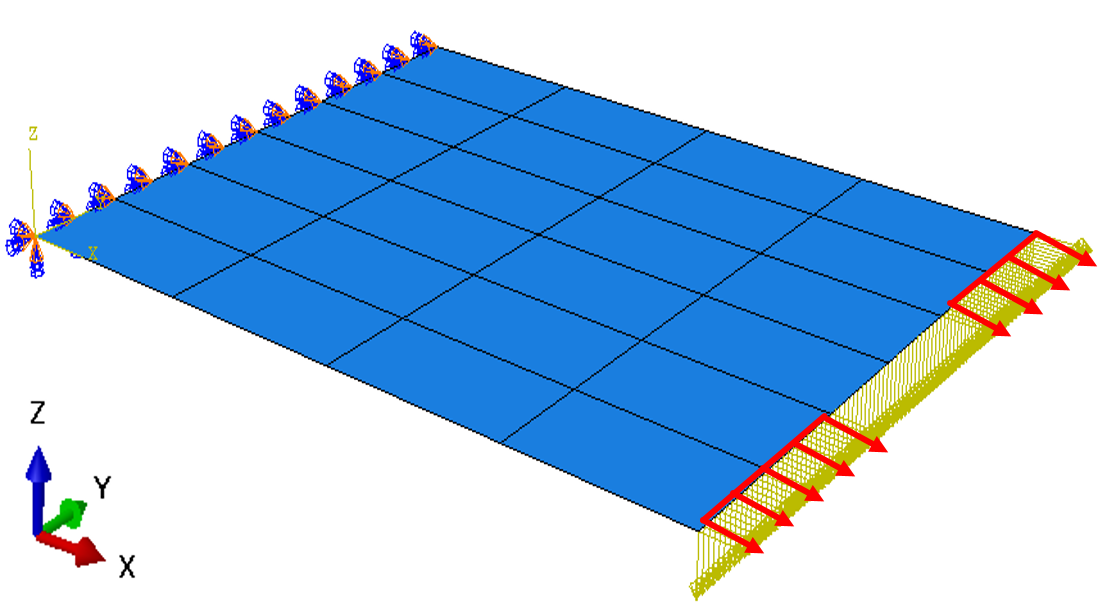About the Bending Plate Example | ||
| ||
About the Model
In this model, a clustered plate is encastered on the left side with two forces on the right side. One load of L= 2 N per node in negative Z-direction for all nodes and another load L/10 N per node in positive X-direction onto the nodes of the outer thirds. 
In this example, it will be shown how the differences of linear and nonlinear kinematics (NLGEOM=OFF/ON) affect the optimization results. The sizing optimization task is to minimize the displacement of the right nodes in X-direction while using 90% of the initial volume. By default, the shell thicknesses are allowed to change up to 25% of the initial thickness and is changed for each element cluster. Within a cluster, the elements will have the same thickness.
Procedure Summary
| Model: | Bending_Plate_NL, Bending_Plate_LIN |
| Design Area: | All elements |
| Objective: | Minimize displacement in X-direction of the nodes of the right edge |
| Constraint: | Relative volume of less or equal 90% |